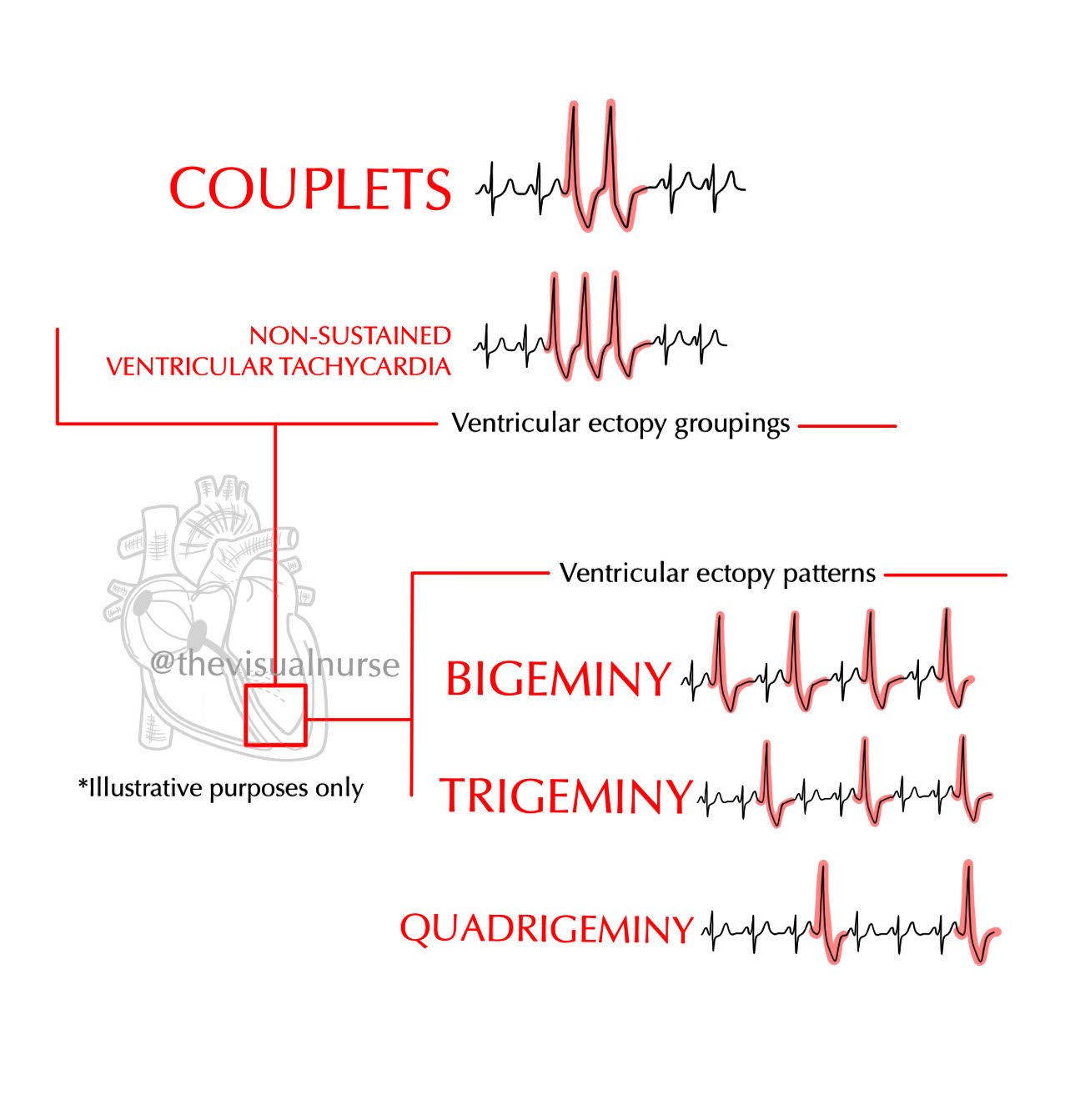Ventricular ectopy recognition: Groupings and patterns on the ECG for nurses & nursing students
Ventricular ectopy may present with or without an identifiable pattern. I like to think of premature ventricular contractions (PVCs) in terms of "groupings" and "patterns".
Groupings:
Couplets: think of two people that show up to a party together. The underlying rhythm in the examples pictured above is a sinus rhythm with an interruption in the first example; the brief interruption being the couplet (25mm/sec). The couplet appears when they walk through the door and after everyone says hello, the party goes on as before (sinus is resumed). Be careful not to confuse this with ventricular bigeminy. For now, think couplet = couple (also note that the PVCs may be unifocal, arising from the same area, or multifocal and appearing dissimilar to one another).
NSVT: non-sustained ventricular tachycardia. "Non-sustained" refers to ventricular tachycardia (VT runs) lasting less than 30 seconds before terminating. Ventricular tachycardia tells us that by definition, 3 or more successive PVCs are present. Often times you may also hear 3 PVCs in a row referred to as a "triplet" which is also fine. Just know that a triplet is 3 PVCs, and 3 or more PVCs is referred to as ventricular tachycardia (by textbook definition).
Patterns:
May include bigeminy, trigeminy, & quadrigeminy and are also depicted above and below. Hope this helps!
===============================================================================
Follow @thevisualnurse on Instagram for visual summary graphics like these and daily rhythm quizzes!
Instagram @thevisualnurse
TikTok @the.visualnurse

